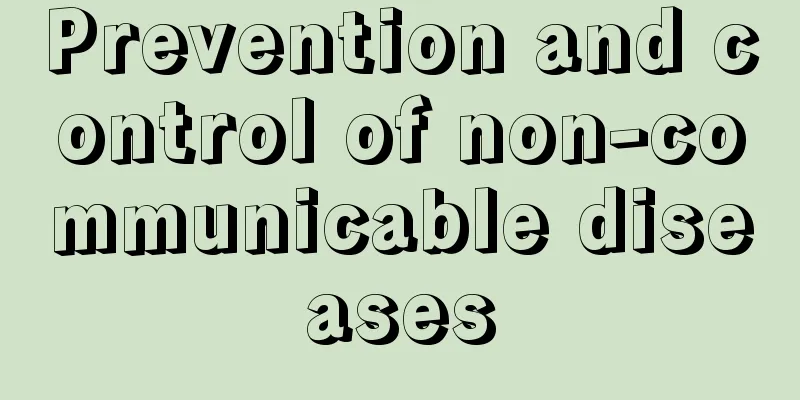Prevention and control of non-communicable diseases

|
Everyone must be curious about the prevention and control of non-communicable diseases. Every year, more than 30 million people die from non-communicable diseases worldwide. Although they are not contagious between people, many people still die because of their slow progression. Let’s take a look at the prevention and control of non-communicable diseases. Prevention and Control: 1 Reducing the impact of NCDs on individuals and societies requires an integrated approach that calls for all sectors, including health, finance, foreign affairs, education, agriculture, planning and others, to work together to reduce the risks associated with chronic NCDs and promote interventions to prevent and control them. 2 An important way to reduce noncommunicable diseases is to focus on reducing the risk factors associated with these diseases. Low-cost solutions exist to reduce common modifiable risk factors (primarily tobacco use, unhealthy diet and physical inactivity, and harmful use of alcohol) and to characterize the prevalence of noncommunicable diseases and their risk factors. 3 Other approaches to reducing NCDs are high-impact essential NCD interventions that can be delivered through a primary health care approach, strengthening early detection and timely treatment. Evidence suggests that such interventions are excellent economic investments because, if used early in patients, they reduce the need for more expensive treatments. These measures can be implemented in a variety of contexts with varying resource availability. The greatest impact can be achieved through the development of sound public policies that promote the prevention and control of noncommunicable diseases and by reorienting health systems to address the needs of people with these diseases. Generally speaking, low-income countries have lower capacity to prevent and control noncommunicable diseases. High-income countries are almost four times more likely than low-income countries to include NCD services in health insurance. Countries with inadequate health insurance coverage are less likely to have access to essential NCD interventions for all. From the above we know some precautions about the prevention and control of non-communicable diseases. As for non-communicable diseases, it does not mean that our chances of getting sick are smaller, or that we should not take it seriously. We should do timely and detailed physical examinations to nip the disease in the bud. At the same time, our country should also improve the medical insurance system to protect people's right to life and health. |
<<: Several ways to prevent coronary heart disease
>>: Comprehensive understanding of Alzheimer's disease
Recommend
Long-term constipation increases the incidence of cervical cancer in women
The incidence of cervical cancer in women is seco...
How long does it take for allergic symptoms to subside on their own?
If a person's skin is sensitive, it means tha...
The cause of colon cancer may be due to dietary factors
The cause of colon cancer may be due to dietary f...
Why does my tongue hurt?
The tongue is a special organ that we use to tast...
The function of coral sand
I don’t know if you have ever seen coral sand in ...
Early liver cancer is often accompanied by digestive tract symptoms
Women have always been a vulnerable group, so man...
What are the common early symptoms of lung cancer? Introduction to 4 early symptoms of lung cancer
The typical symptom of lung cancer is coughing, w...
What tests should be done for lung cancer?
In recent years, the incidence and mortality of l...
The harm of washing your hair with cola
Many people don’t know that cola can be used to w...
What can children eat to improve immunity?
Nowadays, many children are getting sick more and...
When I get angry, I get a lump behind my ear
Getting angry is a common phenomenon in our lives...
In which areas is nasopharyngeal tumor most likely to occur
Surveys show that about 80% of nasopharyngeal tum...
Ten signs of depression that should not be ignored!
As material prices continue to rise in real life,...
Zoonotic infectious diseases
As people's living standards improve, many pe...
Causes, solutions and precautions for severe peeling of athlete's foot
Athlete's foot leading to peeling is a very c...









